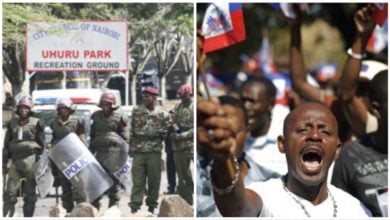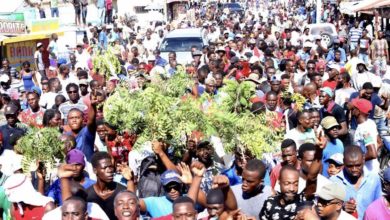The Haitian revolution is a vibrant lesson in the struggles of oppressed peoples for liberation. In 1791, 500,000 slaves rose and fought British, Spanish and French imperialism to gain first emancipation and then, independence in 1804.
The colony of Saint Domingue, now the Republic of Haiti, was France’s most prosperous colony when the French Revolution began in 1789. It supplied half of Europe with sugar, coffee and cotton. And two-thirds of France’s foreign trade was centered on the island. All of this was produced by slave labor—men, women and children who were constantly being forcibly brought from Africa. After 1787, 40,000 slaves were brought to Saint Domingue each year.
When the French revolution began in 1789, it fanned already existing flames of class conflict in Saint Domingue.
In August 1791, the slaves of Saint Domingue revolted. Under the leadership of Boukman, slaves on the plantations around Limbe and Cap Le Haitien set fire to the fields. In less than a week, the valuable North Plain was in ruins.
The revolt grew rapidly. A month into the revolt, Toussaint Bréda—he later changed his name to L’Ouverture—left the plantation and joined the revolt. Already 45, he had learned to read and write.
The revolt quickly became the focus of fierce inter-imperialist rivalry in the Caribbean. Spain and Britain were at war with France. The Spanish entreated the leaders of the slave revolt to join with their forces in San Domingo, which shared the island of Hispaniola with Saint Domingue. The British called for the abolition of slavery in an attempt to win allies among the slaves and undermine French rule.
Toussaint, along with a few hundred men, joined the Spanish troops, and proceeded to organize what would be the core of the revolutionary army.
Throughout the struggle for emancipation Toussaint spoke to, organized, and armed the Black slaves under the slogan of liberty.
In an effort to swing the Black masses away from British influence, Sonthonax, the French commissioner in Saint Domingue, abolished slavery on August 29, 1793. But Toussaint did not join the French forces until the Paris masses forced the French National Assembly to declare emancipation in all colonies.
In May 1794, Toussaint joined the French with 4,000 soldiers. By 1796, he was known to the former slaves as the man who had liberated them.
Toussaint and his forces expelled the British and Spanish from Saint Domingue and took control of the Spanish colony of San Domingo, unifying the island under French control by 1800.
By this time, the French Revolution had taken a rightward turn. The bourgeoisie in France, after overthrowing the feudal monarchy, were now busy trying to repress the revolutionary masses. Napoleon Bonaparte was their choice to consolidate bourgeois power.
In 1802, fearful of the organized and armed Black masses in Saint Domingue, Bonaparte sent an expedition of 12,000 men led by his brother-in-law Leclerc with instructions to re-institute slavery. Ultimately 40,000 troops would be sent to Haiti to regain the former colony.
Toussaint and his chief officers, Dessalines in particular, led a fierce and powerful resistance to the French. But Toussaint’s past pro-French rhetoric sowed confusion among the Black masses. Unable to organize against the French armies, Toussaint was defeated.
Despite Toussaint’s attempts to maneuver following the defeat, he was ultimately captured and sent to France. He died in 1803.
It was Dessalines, one of Toussaint’s generals and a former slave, who led Haiti’s war of independence. He led an uncompromising campaign against the French, destroying their property in a scorched-earth campaign. On Jan. 1, 1804, Dessalines declared the Republic of Haiti.
In his inaugural address to the new Republic, Dessalines declared, “Never again shall colonist or European set foot on this soil as master or landowner.”






